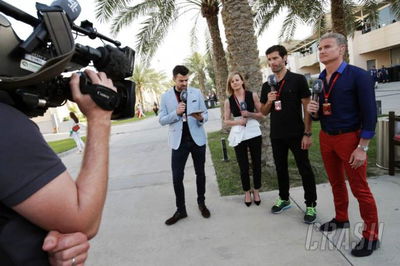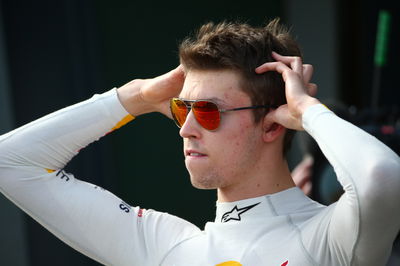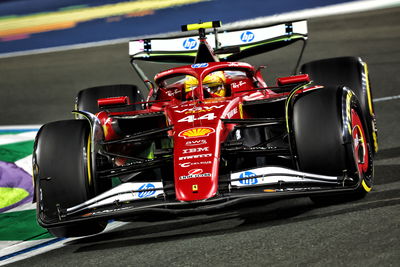Can F1 really afford to abandon free-to-air TV?

Following the completion of Liberty Media's takeover of Formula 1 in January and the first appearance of its leadership triumvirate - Chase Carey, Sean Bratches and Ross Brawn - in the paddock together over the Australian Grand Prix weekend, the picture of what the sport may come to look like in years to come is slowly starting to come together.
Brawn and Bratches held a joint press conference in Melbourne where they discussed a number of ideas regarding plans for F1's future, with the matter of television rights coming up. Liberty has already made clear that it wants to make F1 as big and as visible as possible, getting as many eyeballs watching on TV as they can. As a result, the balance between pay TV and free-to-air broadcasting is set to be more crucial than ever.
The decline in global viewership
Liberty has a number of things to fix in F1, but one of the biggest challenges is reversing the decline in viewership that has set in over the past 10 years. A third less people watch F1 on TV than they did back in 2008, with the 2016 total coming in at around 425 million. Much of this has been put down to the lack of on-track action, the quieter cars or the dominance of one team - but a large amount can certainly be put down to the shift from free-to-air to subscription TV.
 |
The UK was one of the biggest markets hit by the shift away from FTA back in 2012, with Sky Sports picking up the rights to show the entire season live. The BBC retained rights to show half of the races live and broadcast highlights for the remainder, with Channel 4 picking up the deal from 2016 onwards. This did coincide with the lowest UK TV figures in almost a decade, with subscription packages becoming increasingly costly and moving out of reach for the casual fan. As of 2019, the only place to watch F1 live will by on Sky Sports; no free-to-air races are planned to be shown live.
The story in the UK is a familiar one around the world. Nations such as France, China and Australia have taken on subscription models, contributing to the fall in audience in recent years. The consensus for fans is that free-to-air is the answer to many of F1's problems: ditch the big subscription contracts, make the sport affordable to watch, and voila: audiences begin to rise again.
But it is nowhere near as easy as that.
Why do sports need subscription TV?
Subscription TV is a key component the financial models of most sports, F1 included. It is a key part of the financial revenue that is turned over each year. The likes of Sky and BT simply have more money to throw at showing live sport than the BBC, ITV or Channel 4. While some events are clinging on to their free-to-air principles (namely Wimbledon's tennis championships, which are still shown in full on free-to-air) for the sake of keeping it as accessible as possible, some of the money offered by subscription broadcasters can be so lucrative that it changes the entire sport.
Take football. When the Premier League was launched back in 1992, Sky Sports snapped up a deal to show 30 games per year live. Over the years, this has escalated into some of the biggest numbers in sport's broadcasting. In 2015, Sky shelled out ?4.18 billion for rights to 126 live games each year, fending off a bid from rivals BT. By comparison, Sky had paid just ?2.28 billion two years earlier. The result was that every club in the Premier League benefitted greatly, with budgets rising and spending on players spiralling as a result. Unlike in F1, there are no doubts about whether or not teams will survive; all of them are doing booming business thanks to the TV deals in play.
 |
So as wide-reaching as free-to-air TV can be, there are obvious gains to be made when it comes to getting a subscription deal right. Now that Liberty is in the driving seat as well, teams are also more likely to benefit. F1's previous owner CVC was interested chiefly in making profits, meaning that big-buck TV deals lined their pockets first and foremost, with teams not feeling much of a difference.
It is for that reason that the likes of Manor and Caterham have collapsed in recent years, while the disparity between the large manufacturer operations and the privateers remains vast. If you exist purely to race in F1, you'll struggle. As a result, another of Liberty's big tasks will be revamping the distribution of revenue in F1, meaning that if TV deals can rise in value, there could be a big boost in team budgets. Naturally, the FIA would then need to ensure that spending did not spiral out of control as a result - every solution creates another problem!
Making free-to-air a 'barker'
There is still a big role for free-to-air TV to play, as Bratches acknowledged during his Melbourne press conference.
"More so than not, organisations are finding themselves on pay [TV] because that's where the money is," Bratches said.
"But I think there are ways to have an opportunity to create a free-to-air package that acts somewhat as a barker for the sport and creating a brand awareness to broad populate where you have the economic benefit for a number of your circuits and grands prix on pay.
 |
"I think each market is going to be different and I think you are going to find a combination of both free-to-air and pay, and I think that serves everyone's interest. But the revenue on the pay side is difficult to ignore and at the same time we are in a position in Formula One where we are trying to build our brand.
"We are trying to increase the number of sponsors that are investing in our brand, our belief and our vision and to have a combination of the both is an appropriate mix going forward. We'll make that decision on a territory by territory basis."
In layman's terms, Bratches said that it is not possible to simply put everything on subscription services for the sake of greater revenue. Instead, free-to-air broadcasting must still play a role, acting as a way to make fans more aware of the sport and stimulate interest in F1. The greater exposure is also of significant interest to sponsors, who may be uneasy about continuing to pour money into a sport that is only accessed by die-hard fans.
A number of countries already use a model similar to this. Spain shows the Spanish Grand Prix live on free-to-air TV, with the remainder of the season being available via a subscription service. In the United States, four races per year - Monaco, Canada, USA and Mexico - are shown live free-to-air on NBC; the rest is Iive on NBCSN, available through a cable subscription.
It may be that the UK could follow suit in years to come when Sky's monopoly on live races begins. If some wiggle room can be found in the contract, Liberty may push to get at least the British Grand Prix on a free-to-air channel and keep the highlights package that Channel 4 currently has still in play.
New platforms, new viewers
On top of all of this, Liberty will be thinking about other ways of reaching fans, chiefly through digital mediums such as the F1 app and its social media channels, both of which have improved greatly in recent years to become important assets for any fan. While the idea of broadcasting races live on the app is still unlikely given the nature of the TV deals in place, added extras such as onboard cameras and pit lane feeds would certainly go down well.
It could also be that Liberty looks to get F1 some enormous exposure by harnessing the power of a platform such as Twitter or YouTube. Both platforms are used daily by millions of people, making them of key interest to those looking to increase audiences. The NFL launched an interesting scheme last year, broadcasting its Thursday night games of American football live on Twitter. It wasn't intrusive, acting as a small window for people to click onto should they wish. The 10-game deal was worth $10 million and pulled in between 2.6m and 3.1m viewers on average.
If F1 wanted to score a similar victory, it could be that it looks to place a practice session or two each race on a platform such as Twitter, acting as - in the words of Mr. Bratches - a 'barker' for the sport. Fans tune in for free online, become curious, find out more about the sport and another customer is found. Small steps can snowball into big gains.
Such ideas will likely have been discussed by the bosses at Liberty, with the trade-off between pay TV and free-to-air broadcasting being a tough one to balance. But be rest assured: free-to-air remains an important part of F1's TV strategy moving forward. And that can only be a good thing for fans.
Latest Tweets from Crash.net & GPF1rst











